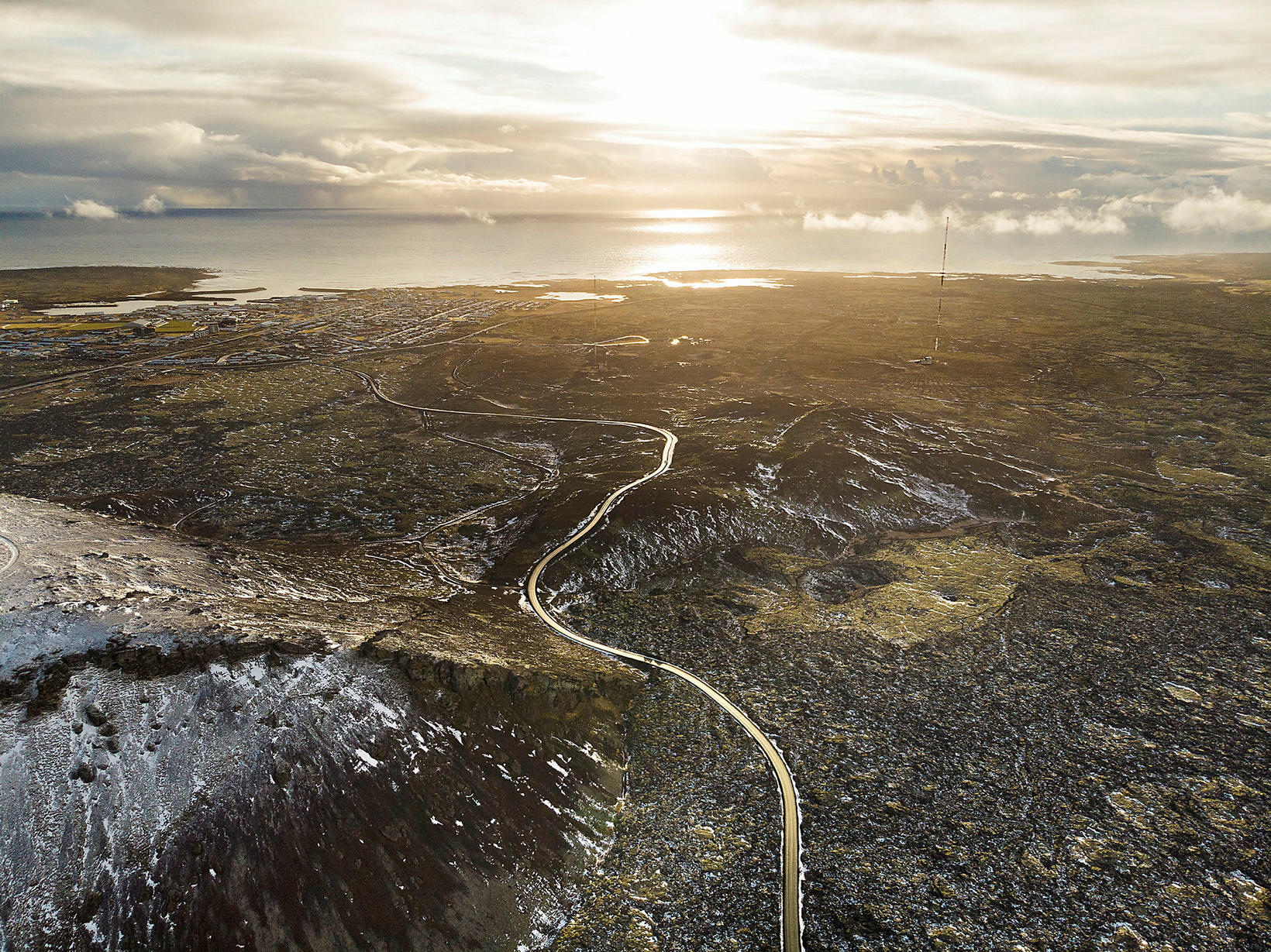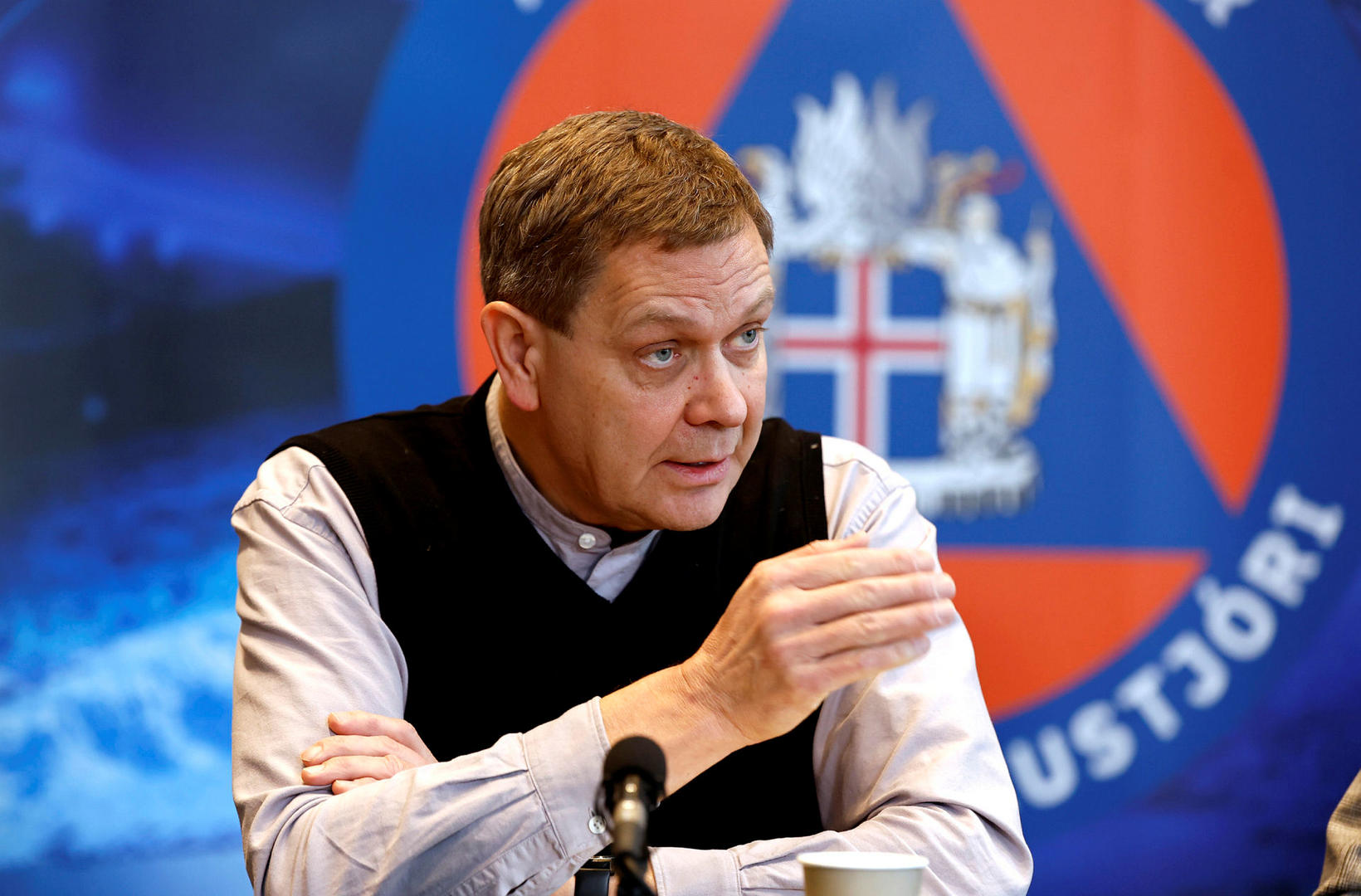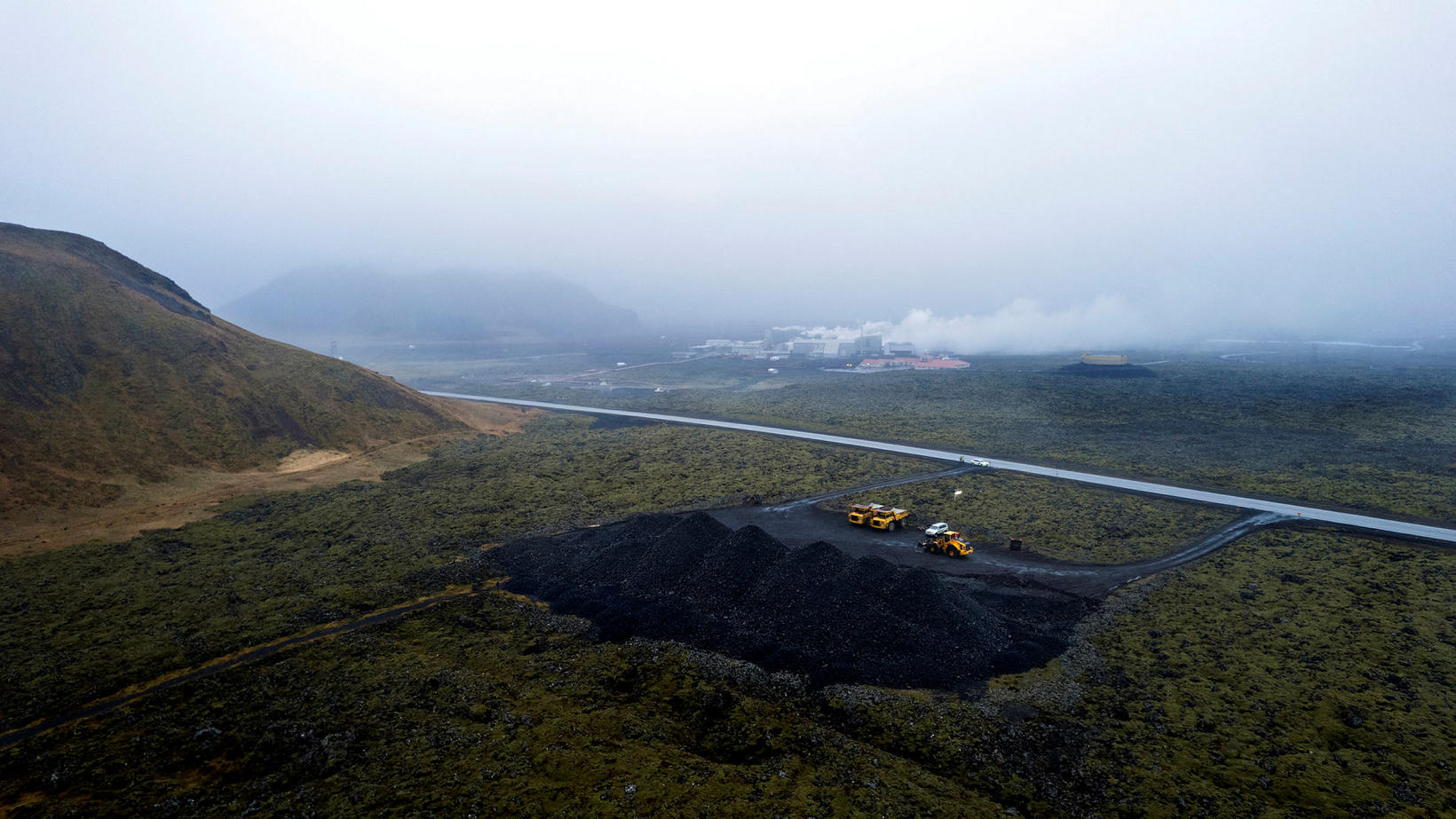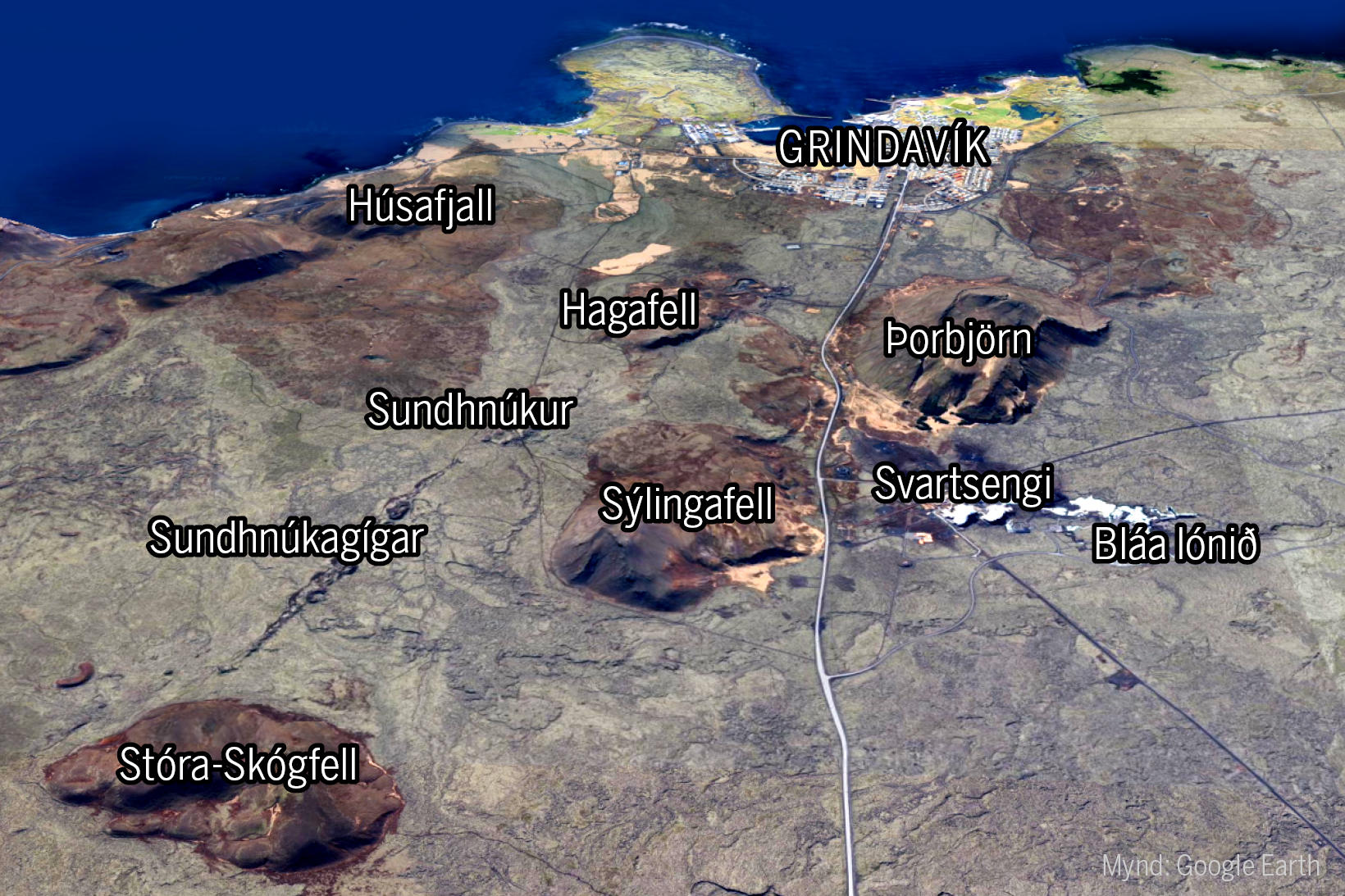90% of the magma dike solidified
Land is rising at a slower speed in Svartsengi and it is not certain when or whether it will reach the same height as it did on November 10. mbl.is/Kristinn Magnússon
The majority of the dike at Svartsengi has hardened. The likelihood of a volcanic eruption is decreasing and the land rising at Svartsengi has slowed down. Magnús Tumi Guðmundsson, professor of geophysics at the University of Iceland, says this to mbl.is.
Guðmundsson explains that magma, when it makes its way up into the crust, is a thousand degrees hotter than the rock around it, “a little like water that’s put inside a fifty-degree frost”. It therefore decomposes extremely quickly on the edges of the magma channel.
He says that the dike is about two metres thick in most places, but somewhat wider elsewhere. Now that two weeks have passed since the dike was formed, 90% of the dike is solidified.
“This doesn’t preclude that there’s still something left and that there’s still an open way the magma could go upwards, if more magma accumulates,” he says. “But the likelihood of an eruption has become considerably lower than it was, among other things, because of this.”
Magnús Tumi Guðmundsson, professor of geophysics at the University of Iceland. mbl.is/Eggert Jóhannesson
Eruption most likely east of Sýlingarfell
The probability of an eruption is less than it was due to the decrease in seismic activity in the area and the low level of reflection of the tectonic plates, according to the geophysicist.
“There is no way to exclude that there will be an eruption. The most likely area is in the middle of the dike, east of Sýlingarfell mountain,” he says.
“This naturally only applies to the current situation. A new process can then start in the near future,” he adds, pointing out that magma is still inflowing into a storage chamber at a depth of 5-6 km below Svartsengi. There is, however, no tension and very little earthquake activity.
Eruption in the fissure unlikely
It was previously thought that an eruption could occur in or near Grindavík, but a fissure was formed there after a large earthquake on the night of November 10.
Guðmundsson says that there are no longer any indications that an eruption will begin in the fissure.
“There are no signs of any magma accumulating in Grindavík itself,” he says.
A big fissure goes through the town of Grindavík and here the road is completely severed. Eggert Jóhannesson
Land is rising at a slower speed
He says that the land rise at Svartsengi has slowed down a bit and he considers it unlikely that the land rise will have reached the same level by the end of the month as it had reached on November 10.
“There are several scenarios. One is that the land rise will continue under the Svartsengi at a significant rate and in a few weeks there will be a situation similar to that which existed before this event,” he says, and continues:
“The other thing is quite clear, however, that pressure cannot build up to the same extent as it was before. There is now a weakness where the tunnel is, and although it is largely solidified, there is still, in all likelihood, a connection [where the magma flows upwards].”
Guðmundsson says it’s unlikely that heavy pressure will build up again under the Svartsengi. “The roof has been broken and it takes months or years before it reaches its previous strength. Even though it has been deconstructed, it is weak.”
Risks of operating power plants in active volcanoes
The geophysicist says there is no guarantee that the defense walls will save everything, but it is clear that they can protect a lot of houses and a lot of valuables. It could certainly mean saving one area at the expense of the other.
“It’s not a simple thing to deal with the natural forces,” he says and also points out that there are certain risks involved in exploiting the geothermal energy in Iceland, although it’s a great benefit to the nation.
“We live in Iceland. This is a country where there are volcanic eruptions. Certain infrastructures are at risk when they erupt. And when we look at our geothermal power plants, the energy is being used in geothermal areas that are in active volcanoes. Because that is where the heat is,” he says.
Could it be possible to connect the airport from the capital region to the southern part of Iceland?
Guðmundsson says it could be important to connect hot water from the capital to the Suðurnes region. “If the Svartsengi power plant was to be discontinued, then the pipeline from the Reykjavik area could keep Suðurnes, Keflavík Airport, Keflavík and these areas running.”
“A town like Reykjanes is based on getting power and heat from a power plant that would be destroyed or damaged by a volcanic eruption. This kind of connection would save everything,” he concludes.











/frimg/1/38/77/1387784.jpg)



